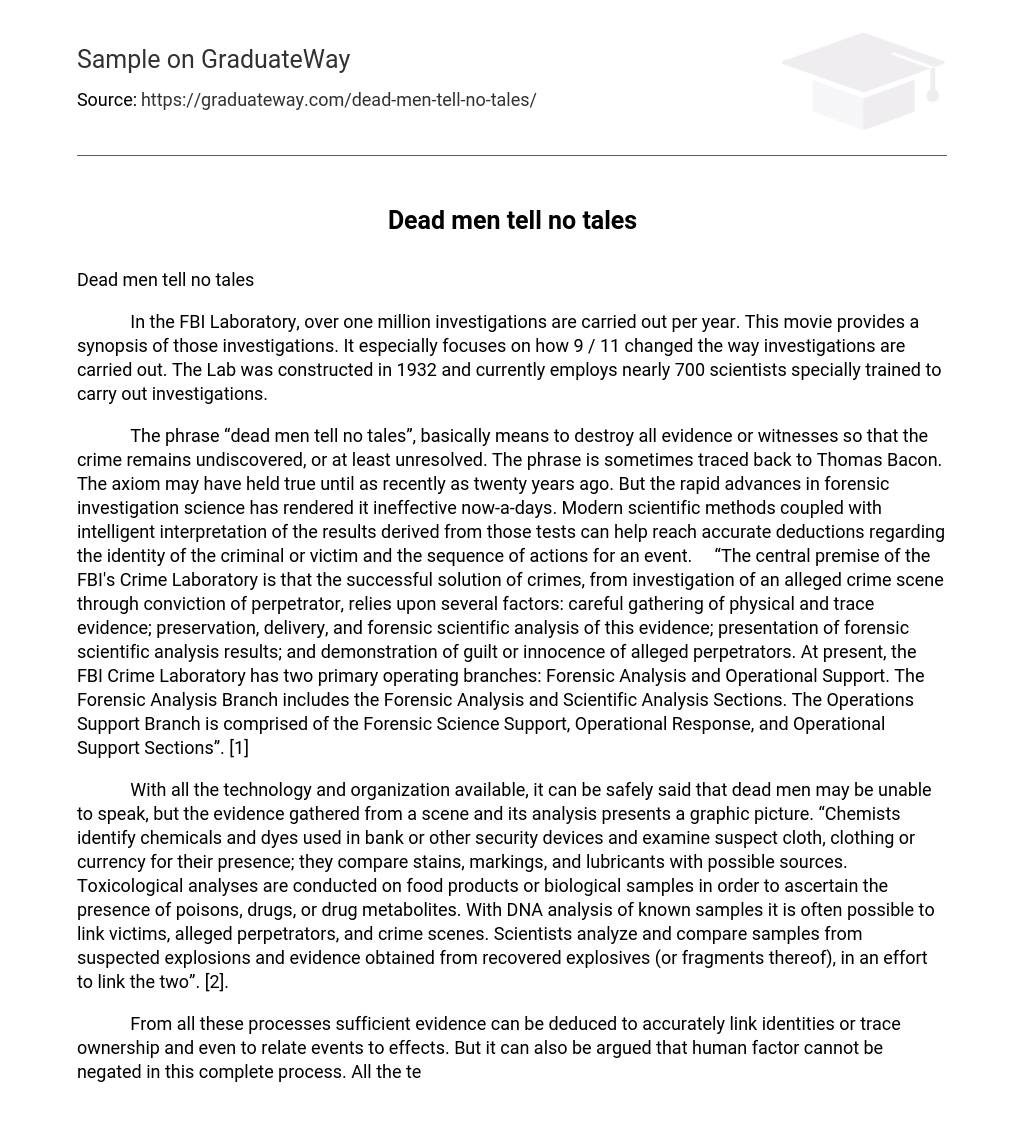In the FBI Laboratory, over one million investigations are carried out per year. This movie provides a synopsis of those investigations. It especially focuses on how 9 / 11 changed the way investigations are carried out. The Lab was constructed in 1932 and currently employs nearly 700 scientists specially trained to carry out investigations.
The phrase “dead men tell no tales”, basically means to destroy all evidence or witnesses so that the crime remains undiscovered, or at least unresolved. The phrase is sometimes traced back to Thomas Bacon. The axiom may have held true until as recently as twenty years ago. But the rapid advances in forensic investigation science has rendered it ineffective now-a-days. Modern scientific methods coupled with intelligent interpretation of the results derived from those tests can help reach accurate deductions regarding the identity of the criminal or victim and the sequence of actions for an event. “The central premise of the FBI’s Crime Laboratory is that the successful solution of crimes, from investigation of an alleged crime scene through conviction of perpetrator, relies upon several factors: careful gathering of physical and trace evidence; preservation, delivery, and forensic scientific analysis of this evidence; presentation of forensic scientific analysis results; and demonstration of guilt or innocence of alleged perpetrators. At present, the FBI Crime Laboratory has two primary operating branches: Forensic Analysis and Operational Support. The Forensic Analysis Branch includes the Forensic Analysis and Scientific Analysis Sections. The Operations Support Branch is comprised of the Forensic Science Support, Operational Response, and Operational Support Sections”. [1]
With all the technology and organization available, it can be safely said that dead men may be unable to speak, but the evidence gathered from a scene and its analysis presents a graphic picture. “Chemists identify chemicals and dyes used in bank or other security devices and examine suspect cloth, clothing or currency for their presence; they compare stains, markings, and lubricants with possible sources. Toxicological analyses are conducted on food products or biological samples in order to ascertain the presence of poisons, drugs, or drug metabolites. With DNA analysis of known samples it is often possible to link victims, alleged perpetrators, and crime scenes. Scientists analyze and compare samples from suspected explosions and evidence obtained from recovered explosives (or fragments thereof), in an effort to link the two”. [2].
From all these processes sufficient evidence can be deduced to accurately link identities or trace ownership and even to relate events to effects. But it can also be argued that human factor cannot be negated in this complete process. All the technology can identify the sole of a small old shoe or the broken head of a doll to be 1000 years old. But the findings would be useless until a human can infer that it means the site once housed a small child. Therefore, drawing correct deductions from the results is as important as being able to gather evidence.
References
1. http://www.wikipedia.com
2. http://www.enotes.com/forensic-science/fbi-crime-laboratory/print





